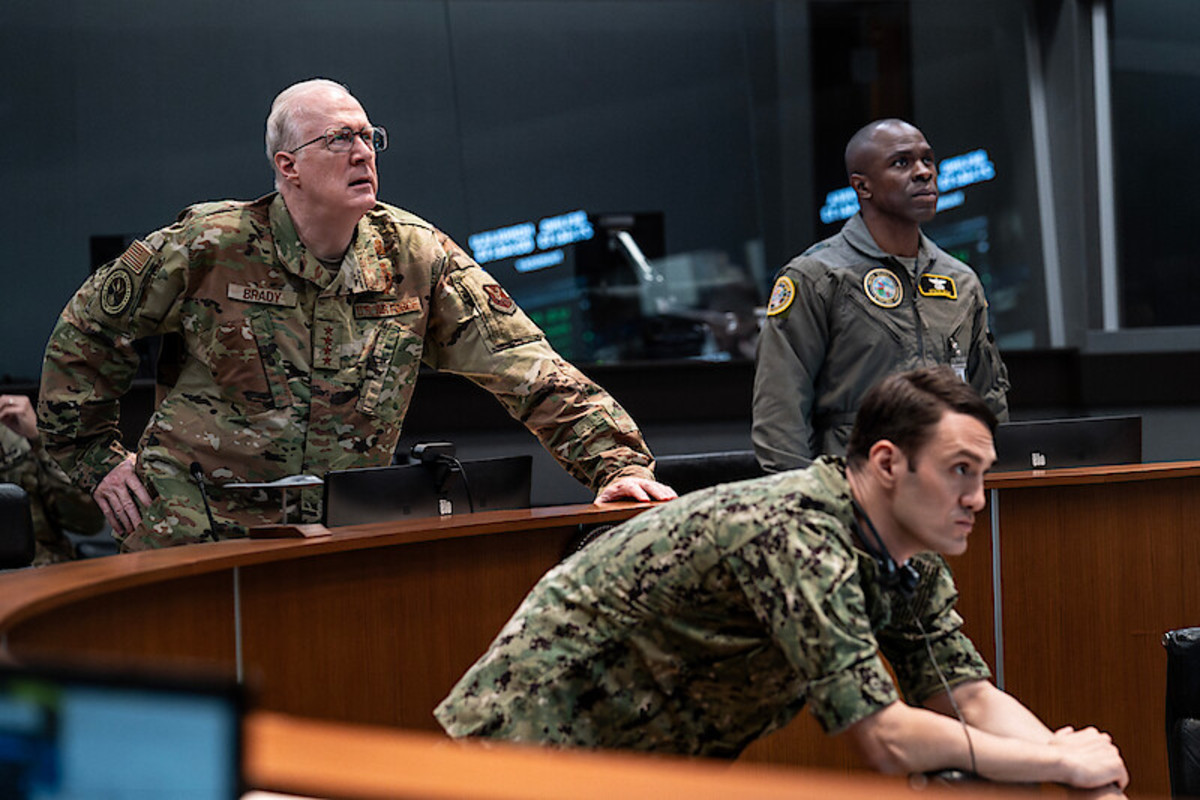Why is everyone being so rude about A House of Dynamite? Well, obviously not everyone has been rude, but for most viewers it seems to have struck the wrong chord. Kathryn Bigelow’s thriller (streaming on Netflix) posits a potential nuclear catastrophe unfolding on American soil and chronicles how the powers-that-be deal with the possibility of impending catastrophe. It completes Bigelow’s unofficial trilogy that began with The Hurt Locker (2009), for which she became the first woman to win an Oscar for Best Director, and continued with Zero Dark Thirty (2012), two controversial Iraq War movies which won much acclaim. A House of Dynamite is no less controversial, but it’s also no less qualified, which makes its dismissal rather puzzling.

Netflix
It’s a Masterclass in Docu-Drama Filmmaking
Unfolding across three separate sections unfolding over “real time” (ostensibly 20 minutes, though each segment runs closer to 40), during which time government officials detect a nuclear missile heading for a major American city and scramble to intercept it, House of Dynamite adopts a Rashomonic structure which follows, amongst many characters: Captain Olivia Walker (Rebecca Ferguson), a senior officer in the White House Situation Room; Admiral Mark Miller (Jason Clarke), the Situation Room’s director; STRATCOM Combatant Commander General Anthony Brady (Tracy Letts, never not brilliant); a military base commander (Anthony Ramos); the Secretary of Defense (Jared Harris); and the President of the United States (Idris Elba).
Bigelow’s movie is a masterclass in docu-drama, and it stands alongside Paul Greengrass’ United 93 (2006) as a queasy piece of modern neo-realist filmmaking. With each chapter, the movie becomes increasingly dreadful. Always a filmmaker of unwavering realism, even back when she was making more straightforward genre movies, Bigelow has crafted a claustrophobic and ambiguous chamber piece which doesn’t offer any answers or easy solutions. It’s unclear from where the attack originated, or if it’s even an attack. It could be a literal blip on the radar or a coordinated strike that’s just beginning. Even if the missile is real, there’s a good chance it won’t detonate. But in order to prevent further casualties, the country, specifically the president, must make a preemptive strike on any and all countries that could have launched the attack.

Netflix
Similar to A24’s Warfare
Though it’s gotten some rave reviews, including from major outlets like The New York Times and the BBC, A House of Dynamite is taking a lot of heat from its critics, who lambaste everything from the structure to a perceived “patriotic” streak, which for many these days is a word used interchangeably with “jingoistic.” Along with Alex Garland and Ray Mendoza’s Warfare, a similarly charged and accomplished piece of political filmmaking, A House of Dynamite might be the most misunderstood movie of the year.
Bigelow’s film is certainly not jingoistic, and it’s far from patriotic. Indeed, it seems the problem most of its detractors have is that it’s not patriotic enough. The film is frightening, and it provides no catharsis. Perhaps those who wish that our country’s military would respond differently to such a threat are unsettled by the dire moral dilemmas Bigelow is exploring. Instead, the people in charge of protecting our country seem largely inept despite their best efforts. With a queasy detail, Bigelow lays out exactly how probable such a circumstance could be. What she does not offer is retribution, or rah-rah action, or, that word again, catharsis. It’s an open wound of a film, one which is wondrously constructed.
Conclusion Is At Once Ambiguous and Clear
If A House of Dynamite scared you, it did its job. And if you did find yourself uneasy after watching it, or wishing for more resolution, that’s not a bad thing. In fact, that feeling is exactly what Bigelow is trying to provoke. In a way, that lasting effect is the very catharsis the movie itself withholds. Many have criticised the ending of the film as lazy and unsatisfying because it does not offer a succinct resolution, but presumably they were not watching closely enough. The conclusion is spelled out from the opening moments, and though Bigelow cuts us off just short of the President making a decision regarding retaliation, we’ve had the answer for the best part of an hour at that point. We know what he will do, and we know the fallout of such an event. A coda, showing evacuees being shuttled into a nuclear bunker, spells out what the final segment did not.
If anything, A House of Dynamite has unsettled certain viewers because it makes our country look rather helpless in the face of the ultimate onslaught. And at a time when tensions are universally high, perhaps Bigelow shaved too close to the bone. But that doesn’t discredit an artist’s accomplishment, nor should it. Relevance can only increase the potency of any work, and A House of Dynamite is one of the most frightfully relevant pieces of media in many years.

Netflix
